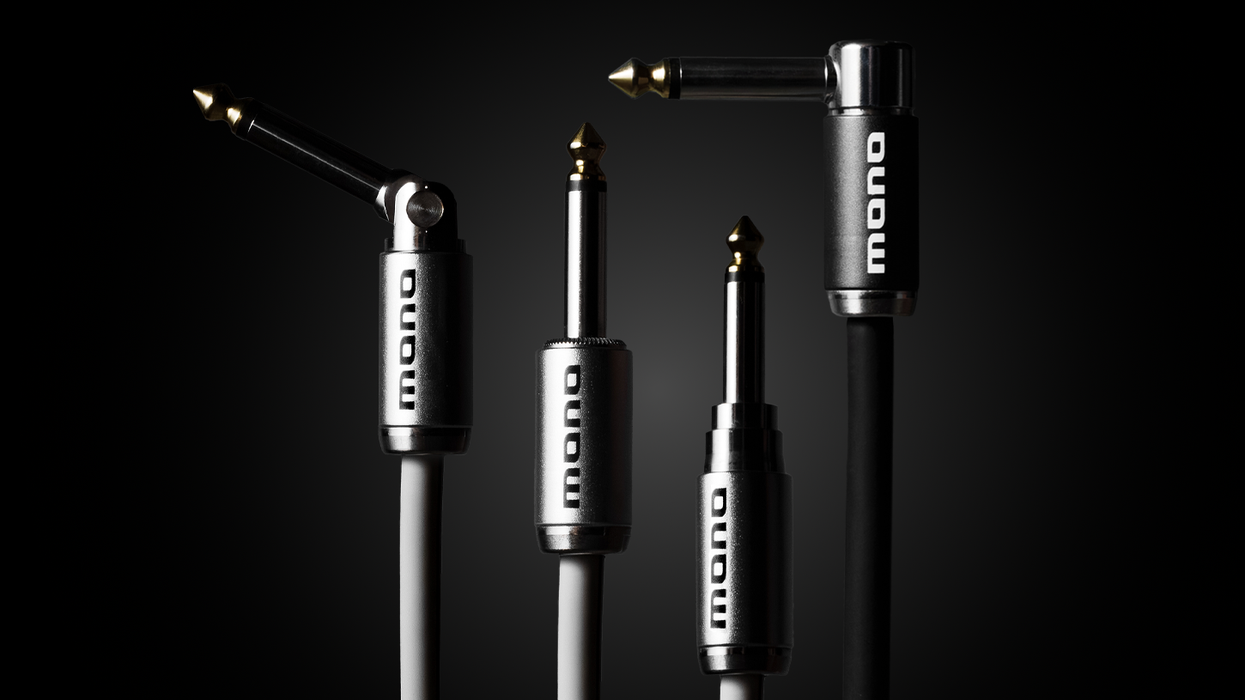Recorded direct using PreSonus FireStudio and PreSonus Studio One 3.
Clip 1: Tone dial dimed. Volume dial dimed.
0:00-0:14 - First toggle position (parallel)
0:15-0:28 - Second toggle position (single-coil)
0:29-0:45 - Third toggle position (“OMG” bass boost)
RatingsPros:Great feel. Fast neck. Nice array of tones. Cons: On the pricey side. Street: $1,699 G&L Fallout glguitars.com | Tones: Playability: Build/Design: Value: |
For a storied company like G&L, it takes a big leap of faith to venture into new territory. There is a huge short-scale-bass movement afoot, and when a builder that typically doesn’t engineer such a beast introduces that type of instrument as a new product, eyes may roll.
A short-scale bass has a few great attributes. First, it makes life a whole lot easier for guitarists when crossing over. Second, short-scale basses have a sweet, distinct tonal vibe that really sets them apart and makes them secret weapons in the studio as well as onstage. And third, because they are considered a vintage callback, today’s crop of short scales have style all their own. We recently looked at the Fallout Bass from G&L and had the chance to see how many boxes this new bass could tick.
Fall In, Fallout
Out of the gig bag, the Fallout has all the feel of a time-portal instrument with its aggressive yet elegant lines, competition racing stripes, and a bold Miami blue color that says, “I’m here to party.” (The bass is also available in racing green and racing yellow.) The 30"-scale Fallout is not a heavy instrument at 10.2 pounds, and it sits comfortably on one’s lap or strapped up thanks to great balance and a deep belly scoop.
The engine on the Fallout bass is a G&L Magnetic Field Design humbucking pickup with three toggle modes: parallel, split, and “OMG.” This pickup is not new, but it represents a big boost (every pun intended) for bass tone and output by creating a wider frequency range in a passive setting. Needless to say, I was excited about the notion of this storied pickup in a short-scale bass.
Don’t Call Me Short!
Plugging into an Eden Terra Nova head and matching Eden 2x10 cabinet, I rolled the volume and tone controls all the way up and set the mini toggle to parallel mode. Wow! I could have stayed here all day. Deep and wonderful, the sound was big yet pointed. And the tone control provides a nice sweet touch to the overall voice without being harsh or gritty. The real treat is that the bass doesn’t necessarily sound “short-scale-y,” but rather very much like a traditional-scale instrument, and I could have used this setting for just about any genre thrown my way.
Next, I toggled to the split (single-coil) setting. To my ears, this setting was a little flat and noisy, and not as exciting. I immediately found myself looking for a way to improve on this with the tone control, hand position, etc. Whereas the tone was completely passable, I just felt the bass sounded a bit ordinary and without its own identity in this setting.
Then I switched to OMG. This setting is essentially a bass boost (by cutting some high frequencies), which brings might to the game. And what a game it is. The Fallout will move some earth with this setting, and it would be right at home for rock, reggae, and funk, as much as it loves some compression with a plectrum.
As I found myself playing way too many notes (a great way to lose a gig), I was impressed with the overall feel of the Fallout. The sustain from the alder body of the bass and the Leo Fender-designed Saddle Lock bridge is notable. The hard rock maple neck is very fast, and the Caribbean rosewood fretboard felt stone solid while also looking great, with its oversized dot markers. Our test bass was well assembled with a tight neck joint and no rough edges or fret issues whatsoever.
To explore the other side of the tone knob, I again began in parallel mode, but with the tone pulled down to nil. The voice was choked, but that’s to be expected. I think this setting would be enhanced with flatwound strings, which would get the Fallout closer to that vintage target. When I eased the tone control up to about 25 percent, the sparkle really happened as the bass provided warmth, depth, and that ’60s feel.
Moving on to the series setting, I again turned the tone control all the way off. The sound was flat and basic here, and not something I would use. But when I twisted the tone control to about 25 percent again, the series setting sounded much better than it did dimed by giving me a nice balance of punch and articulation.
On to the OMG. If you want a nice, deep, and thuddy (not muddy) bass tone, this is your go-to. Add some effects and you have a great sub drop. When I turned the tone dial to the magic 25 percent zone, the sound was deep and balanced. While this setting in particular provided a bit more low end than I would normally play with, it also sounded really nice and inspiring.
The Verdict
G&L’s Fallout bass is lightning fast, will appeal to guitarists, speaks a tonal vibe all its own, and has a vintage feel with modern appointments—making it an all-around winner. What I really liked about the vibe of the Fallout is that it’s bigger than its scale tonally—with big-boy sounds in a diminutive package—and it’s comfy enough to play three or four sets and not be miserable the next day. A lot of studio players have a short-scale bass in their arsenal for good reason, but this bass could easily fill the role as your only instrument with all the tones it has at hand. If this is your first instrument, lucky you. The Fallout could last you a very long time.






![Rig Rundown: AFI [2025]](https://www.premierguitar.com/media-library/youtube.jpg?id=62064741&width=1245&height=700&quality=70&coordinates=0%2C0%2C0%2C0)












 Shop Scott's Rig
Shop Scott's Rig















































